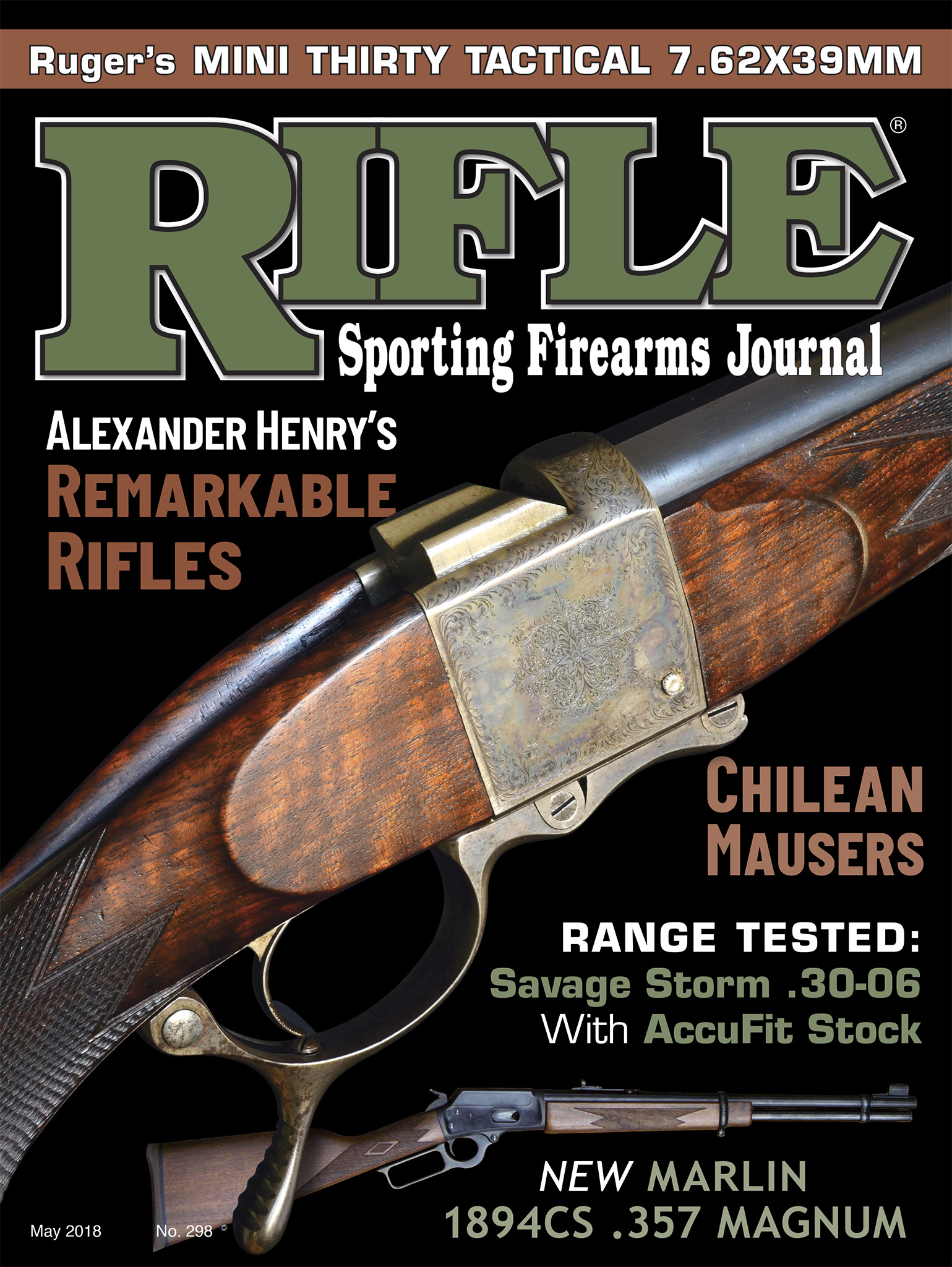Product Tests
Lyman Bag Jack and Shooting Bags
whatsnew By: Jim Matthews | May, 18
Ray Morgan was a big, raw-boned upholster and a part-time range master when I met him in the late 1960s. Ray became my shooting and reloading mentor when I got my first centerfire hunting rifle at age 16. One of the very first things he taught me was benchrest technique, and how to set up a stable shooting platform.
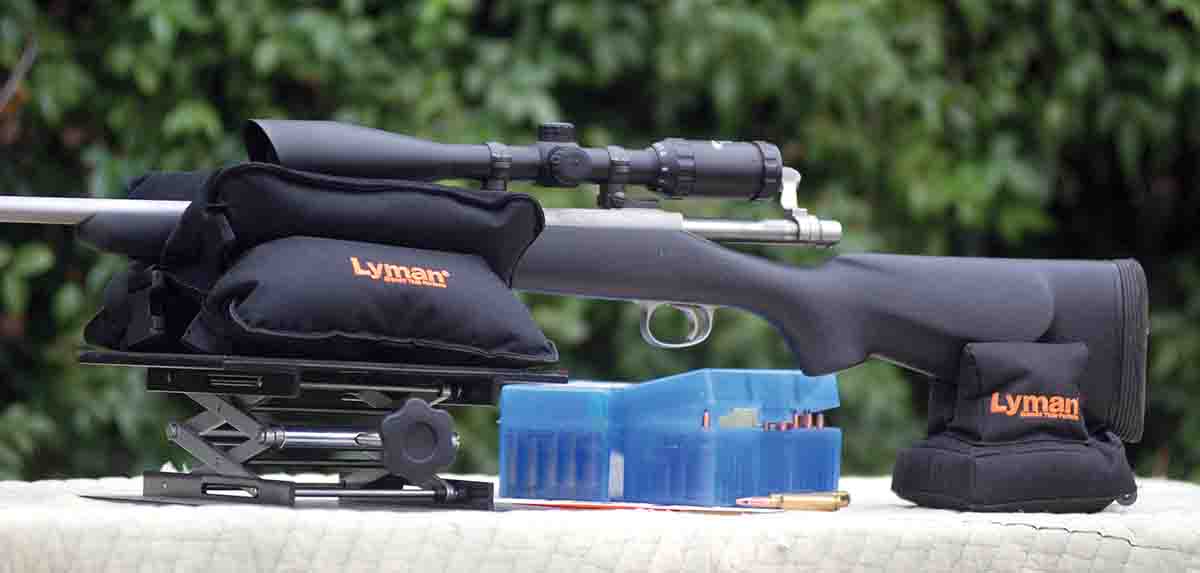
Morgan sewed bright-colored Naugahyde fabric scraps from his furniture-making job into his own sandbags for the forend and butt of the rifles we shot. The fill was coarse, sifted sand from the wash at the range, and the bags were firm but not overly full, so they could be stacked like bricks to the correct height and shaped to fit snugly around the stock. With a number of bags, we could build a stable shooting platform, regardless of the height of the table. The resulting platform Morgan built was rock solid, the correct height, and allowed the rifle to be slid back into the nearly identical position after recoil pushed the gun rearward.
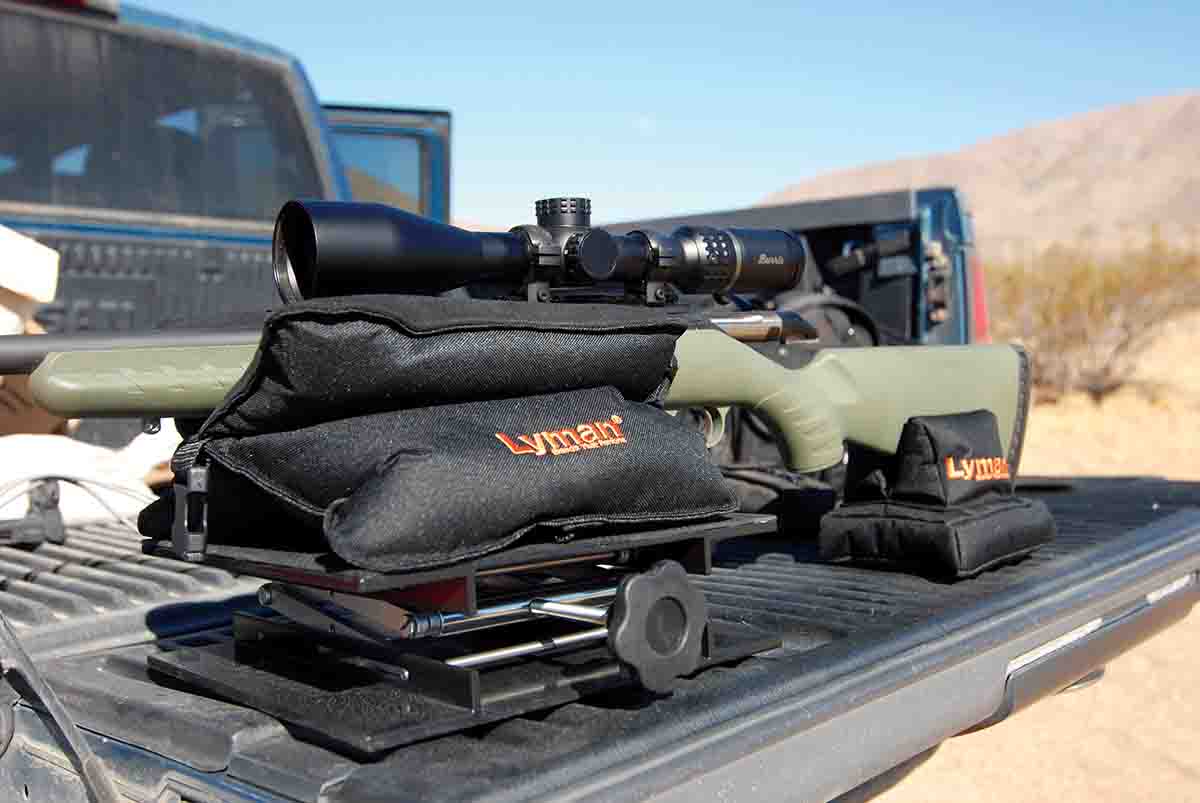
After Morgan passed away, I inherited his colorful sandbags, and they lasted me well into my 40s before the fabric and stitching finally wore out. I then developed a seemingly endless obsession of buying and trying a wide variety of benchrest bags and supports. Most were functional, but they all were – quite frankly – compromises, requiring almost constant adjustment between shots. Or they were never quite the right height, making them uncomfortable to use. Those things simply don’t lend themselves to shooting the best groups.
Lyman solved my problems in 2017 with the introduction of the Lyman Bag Jack and its new shooting bags, especially the Match Bag for the forend of the rifle and the Crosshair Rear Bag to support the buttstock.
The Match Bag has four coarse, polymer-filled chambers attached together at a central point. The upper two chambers are narrower and paired to firmly grip the forearm of the rifle. The bottom two chambers are wider and can not only be adjusted to change height slightly, but they also are the key to the grip applied to the rifle’s stock by the upper two bags. Spread the lower bags apart, and the upper two bags are forced tightly together to grip the stock. Putting the two lower bags closer together loosens the grip of the top bags.
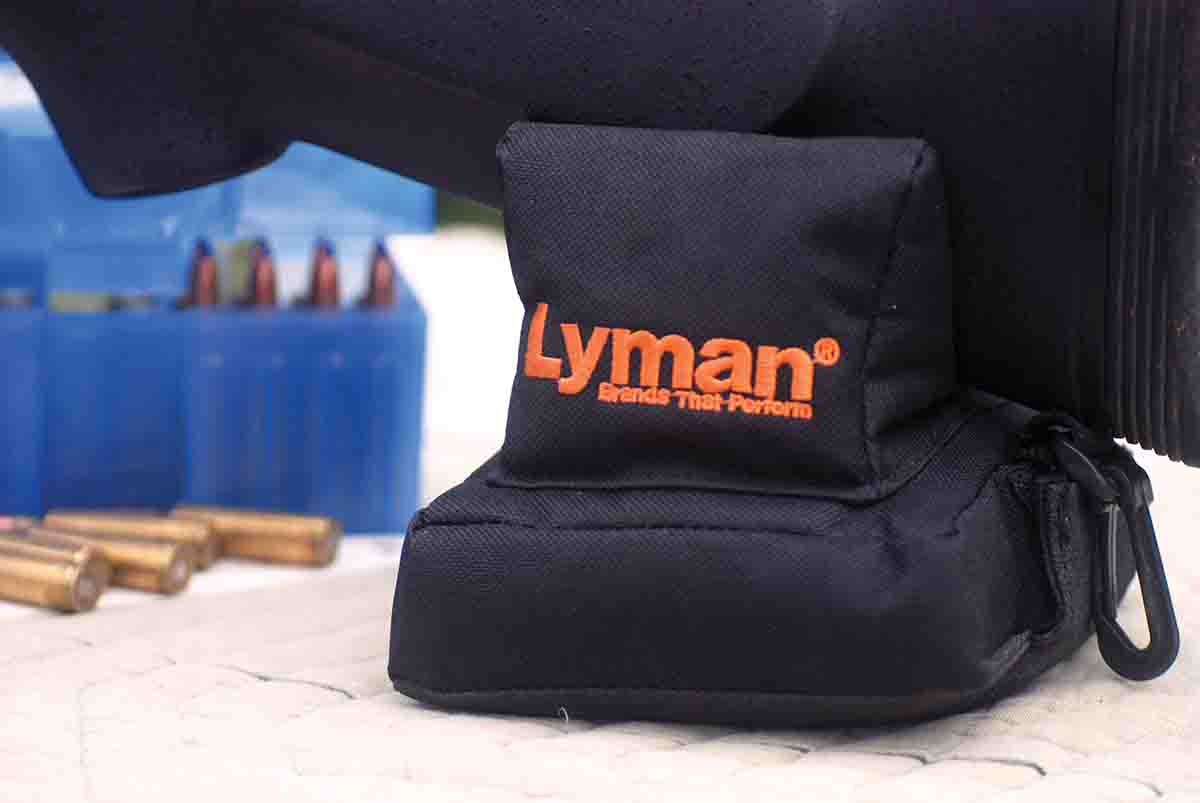
With the big boomers, if the bag is adjusted to grip the forend tightly, you can even reduce felt recoil appreciably. However, the bag lifts up in recoil with the rifle, relieving the pressure on the upper two chambers, requiring the bags to be readjusted for the next shot. If the pressure is set on the forend so that the rifle is snug, but not tightly gripping the bag, the gun slides rearward and lifts off the bag, requiring little or no adjustment for the following shots.
The Crosshair Rear Bag is a V-shaped bag with a flat, stable bottom portion. The V is fairly deep, which creates a snug, noncanting fit on most buttstocks, adding to the stability of the total bag combination. Since there is taper on the bottom of nearly all buttstocks, the V portion of the bag can be slid up and down the buttstock to adjust elevation.
Both bags are made with abrasion-resistant, 600-denier nylon with a suede-like padding on the rifle contact areas, and they both have rubberized fabric added to the bases so they don’t slip.
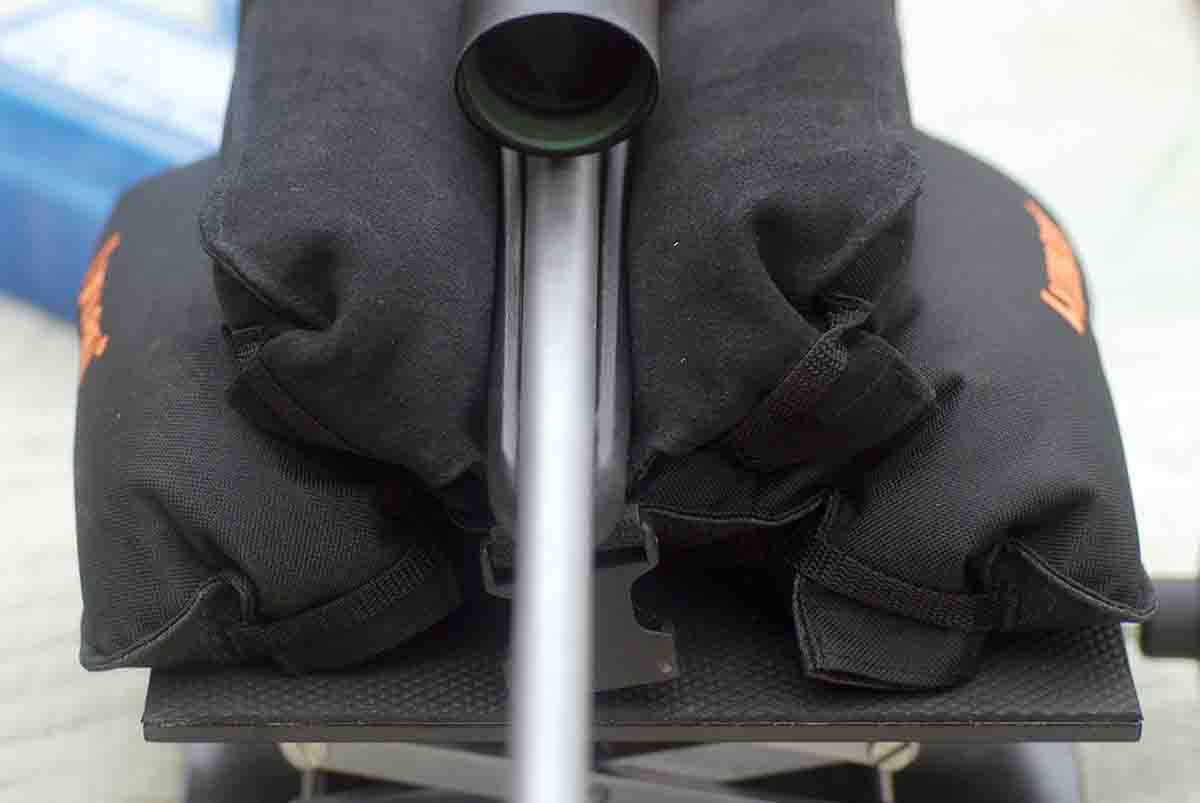
When these two bags are combined with the Lyman Bag Jack, a complete, stable shooting setup is made that can be used on any benchrest, table or tailgate, regardless of height.
The Lyman Bag Jack is a simple opposing cantilever design that allows height adjustments of the front bag by turning the adjustment knob. Fully compressed, the Bag Jack adds about 2.5 inches of additional height from the bench top. Fully raised, it adds nearly 13 inches of additional elevation. The top of the Bag Jack is 10x10 inches, which fits the Match Bag perfectly. The Bag Jack is the final ingredient to this combination that makes it the perfect setup.
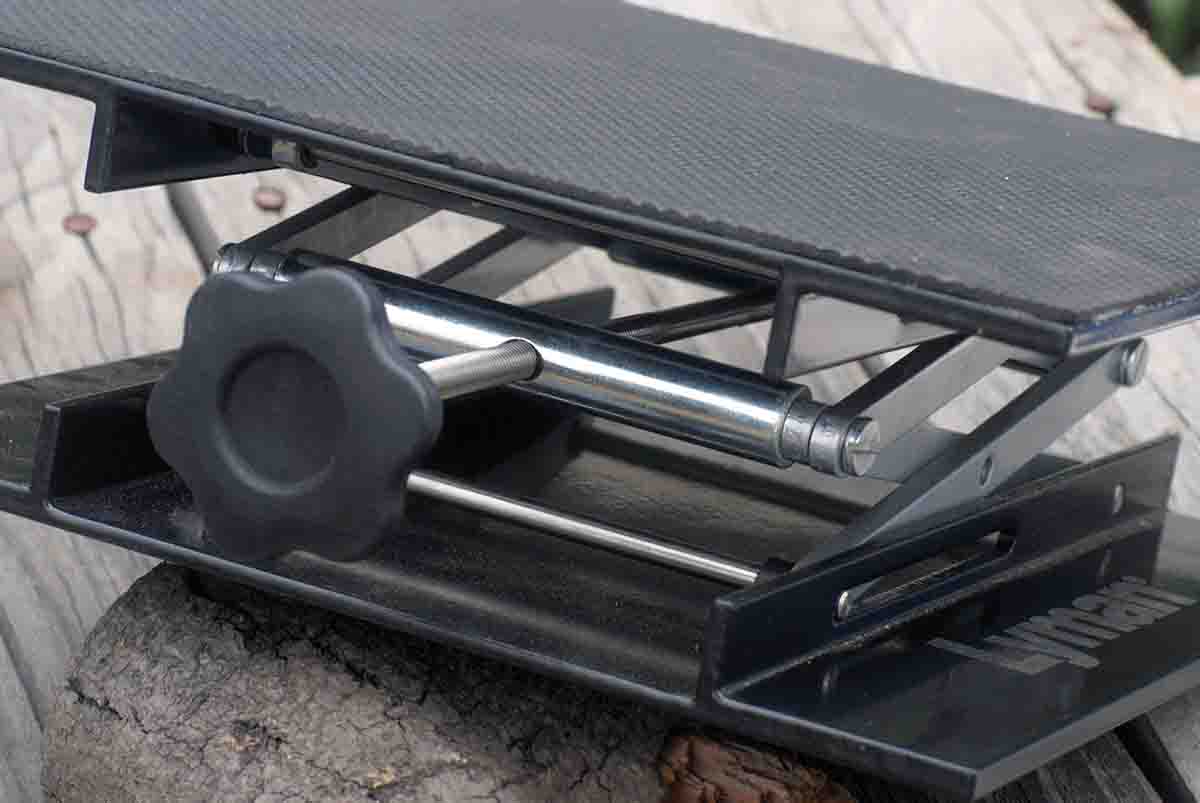
I use the Bag Jack more than just at the range. It has been in regular use in my garage shop and reloading bench as a movable, elevated work platform so I can perform tasks while standing upright instead of sitting or stooping over. I clamp my case trimmer – which is mounted on a piece of wood I normally bolt to my bench top – to the top of the stand so it is at a better height to use while standing.
I’m pretty sure my old mentor Ray Morgan would approve of my new bench shooting arrangement. The retail price of the Lyman Bag Jack is roughly $65, while the Match Bag is about $48. There is a Bag Jack and Match Bag combo for about $100, while the Crosshair Rear Bag is $24. For more information visit Lyman Products at www.lymanproducts.com.


